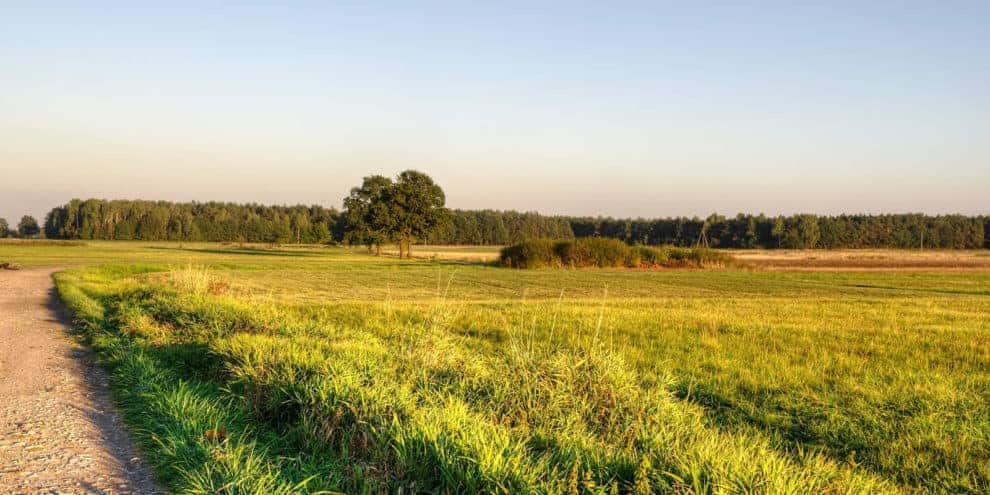The question in the title of this column can be answered in the following way: yes, no and maybe. It depends on the circumstances.
A recorded survey done after 1950 — to choose an arbitrary date — by a licensed surveyor should prove to be accurate and competently done. Earlier ones may also be just fine. The drawing produced by the surveyor will reflect the boundary description as set forth in the owner’s deed with whatever corrections were necessary. The acreage enclosed should be a trustworthy number. The older the survey, the more vague and error-prone they’re likely to be.
A survey sets forth the legal description of a property, using a drawing to locate boundaries and other important features like waterways, improvements, fences, roads, easements and encroachments. Some real-estate transactions require recorded surveys, which would typically be the seller’s responsibility.
A deed’s boundary description may contain an error. Some are simple matters of mistakes in copying, but others are serious and substantial. The surveyor should catch errors of both types.
If no survey is available, the buyer needs to have a surveyor examine the legal description of the boundaries and plot the calls to check for errors in acreage and location, among other things.
The surveyor is likely to use a deed-mapper computer program to draw the deed’s boundaries on a topographical map as well as plain paper. The program will calculate acreage contained within the drawn boundaries. It will also determine whether the deed’s calls close. If either acreage or closure is off, something is wrong with the boundary description. At that point, the surveyor will need to research the chain of past deeds to find the error.
A buyer should not need to repeat a recent recorded survey.
Buyers should be wary of unrecorded surveys. A conceptual drawing showing division lines even those marked on the ground is not a survey. A computer-generated map of boundary lines is not a survey.
A buyer can hire a surveyor to run the deed descriptions through the deed-mapper program without having to pay for a full survey. I’ve often seen deed-mapper plots reveal that the acreage enclosed by the deed’s boundary description is either more or less than the acreage figure set forth in the deed.
The seller may or may not be aware of a discrepancy between the acreage the deed specifies and the acreage the deed’s description actually contains when plotted.
Assuming that the acreage described in the deed matches the acreage figure used in the deed, the next task that a surveyor can perform is to walk the property’s functional boundaries to determine whether the boundaries in the deed line up with the boundaries on the ground. This is not a field survey, in which the surveyor uses his instruments to shoot and measure every deed call.
A walk-around, usually done with boundary lines drawn on a topographical map and a copy of the deed description, is a quick look to determine agreement between deed and dirt, and whether any encroachments exist. The most common encroachment is a fence line that either fences out property belonging to the seller or fences in property that does not belong to him.
I advise clients to have a surveyor plot a deed before submitting a contract offer. The next step, if warranted, would be a walk-around. If problems exist in the deed or on the ground, these two tasks will reveal them.
I advise buyers against agreeing to split the cost of a survey as part of their due diligence during escrow. I always suspect that the seller who wants to share a survey’s cost is, at best, trying to finagle the buyer into paying half the cost of what needs to be done on the seller’s nickel, and, at worst, hook the buyer into a deal by getting him to invest his money in the seller’s property.
Surveyors may give cost estimates for a full-scale field survey at a fixed price, but I’ve generally found that they bill either on an hourly basis or more commonly at a fixed rate per foot.
It should not be necessary to pay for a survey as part of a buyer’s due diligence, but I have found numerous properties with boundary issues that a surveyor or a consulting forester has discovered for me in mapping out the boundaries and/or doing a walk-around.
If you do find it necessary to have a survey done, make sure it includes marking the boundaries on the ground. Some surveyors consider this an add-on task.
I think the best policy is to have a surveyor indicate on the survey any encroachments, but some may disagree. A buyer can point out an encroachment to the seller and ask that he resolve it to the buyer’s satisfaction. This requires a contingency in the contract that provides for the buyer at his expense to undertake a survey check (deed-mapper run) and the agreement of the seller to get it fixed.
When the buyer discovers during his research that the seller will be selling more land than the acreage number in the deed, should he reveal this to the seller? If the seller is competent, I would say no. If the actual acreage is short of the deed-specified acreage, I certainly would point it out, because the asking price is pegged to an inflated acreage number.
This content may not be used or reproduced in any manner whatsoever, in part or in whole, without written permission of LANDTHINK. Use of this content without permission is a violation of federal copyright law. The articles, posts, comments, opinions and information provided by LANDTHINK are for informational and research purposes only and DOES NOT substitute or coincide with the advice of an attorney, accountant, real estate broker or any other licensed real estate professional. LANDTHINK strongly advises visitors and readers to seek their own professional guidance and advice related to buying, investing in or selling real estate.










Add Comment